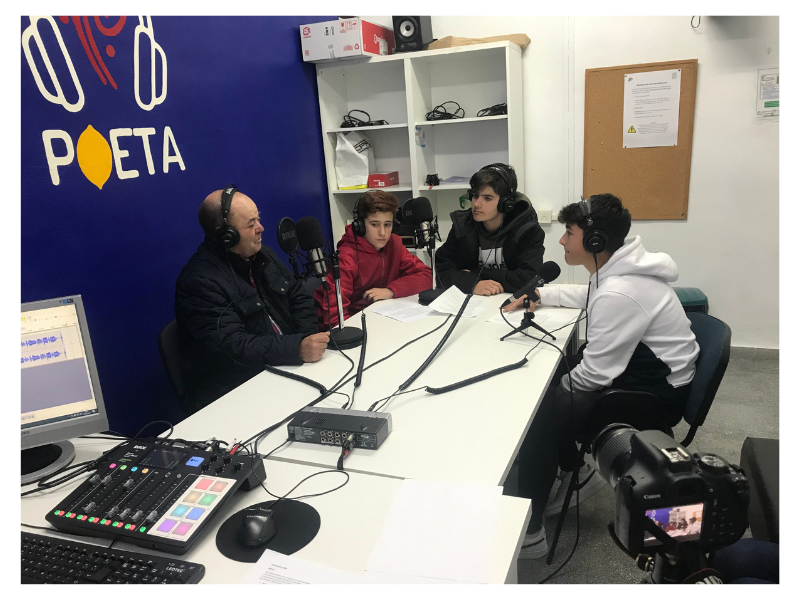
The action involves the study and connection with the forgotten landscape of transhumance in the municipality of Santomera through the creation of a guided documentary. Students have examined the elements of their municipality’s landscape through this ancient practice, subsequently developing fictional stories interpreted and sensitized through mediation and theatricalization. Activities include the study of direct sources such as old maps or laws associated with transhumance, interviews with transhumant shepherds, visits to spaces related to transhumance for understanding, and staging. These activities were carried out leading up to the final production of the docufiction film and its presentation to society.



The action takes place in the geographical context of Santomera, focusing on the transhumance activity and its livestock paths. Several routes associated with this practice traverse Santomera, dating back to ancient times and coinciding with major communication routes along natural water courses used for the transit of livestock in past eras. Moreover, during a long period when human settlement was scarce, human presence was confined to agricultural and livestock activities in passageways, canyons, shelters, and refuges.
In a more recent era, it was a thriving livestock economy until today, where these spaces have been occupied by various elements, degrading the original concept of the activity. Nowadays, the rich intangible heritage associated with transhumant livestock practices is scarcely known.
The action has taken place in the following spaces:
Classroom materials (whiteboard, school supplies, etc.), ancient maps printed on A3 paper (up to 6 maps from different eras), a dossier of educational materials with various informative elements for studying livestock paths (images, laws, activities…), video cameras, and computers for post-production work, props (costumes) for scene preparation.
A two-phase evaluation process, initial and final, has been implemented, both using a consistent format. Throughout the entire process, qualitative and quantitative records of various student activities have been collected to use the work as a grade aligned with the evaluation criteria implemented during the process.
For both the initial and final evaluations, the same open-ended document has been utilized. This document features an image depicting a situation that includes several concepts. In the image, a livestock path is shown, coinciding with the passage of trucks towards the industry. This duality represents the concept of tradition through the currently lost paths like livestock routes and progress through industry, a situation that aligns with the context of Santomera.
The pre-evaluation aims to identify which concepts students distinguish before the implementation of the action. It seeks to understand if they consider what a livestock path is and its relationship with the concept of heritage, while also assessing their awareness of intangible elements. Finally, after analyzing the evaluations, the results are quantified in relation to the action.
Overall, the evaluations serve as a comprehensive assessment of the students’ knowledge, awareness, and engagement with the educational initiative on transhumance and heritage in Santomera.

